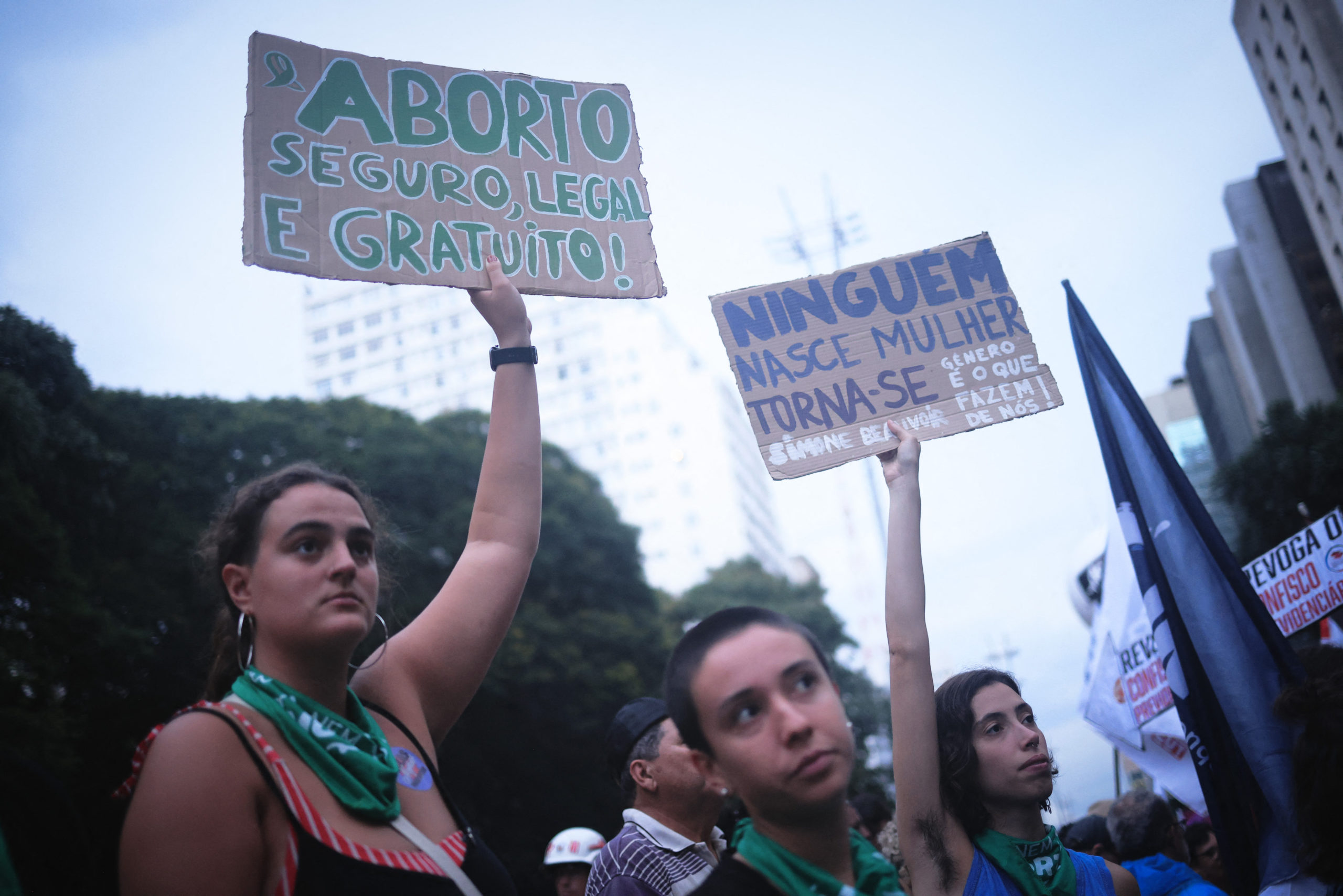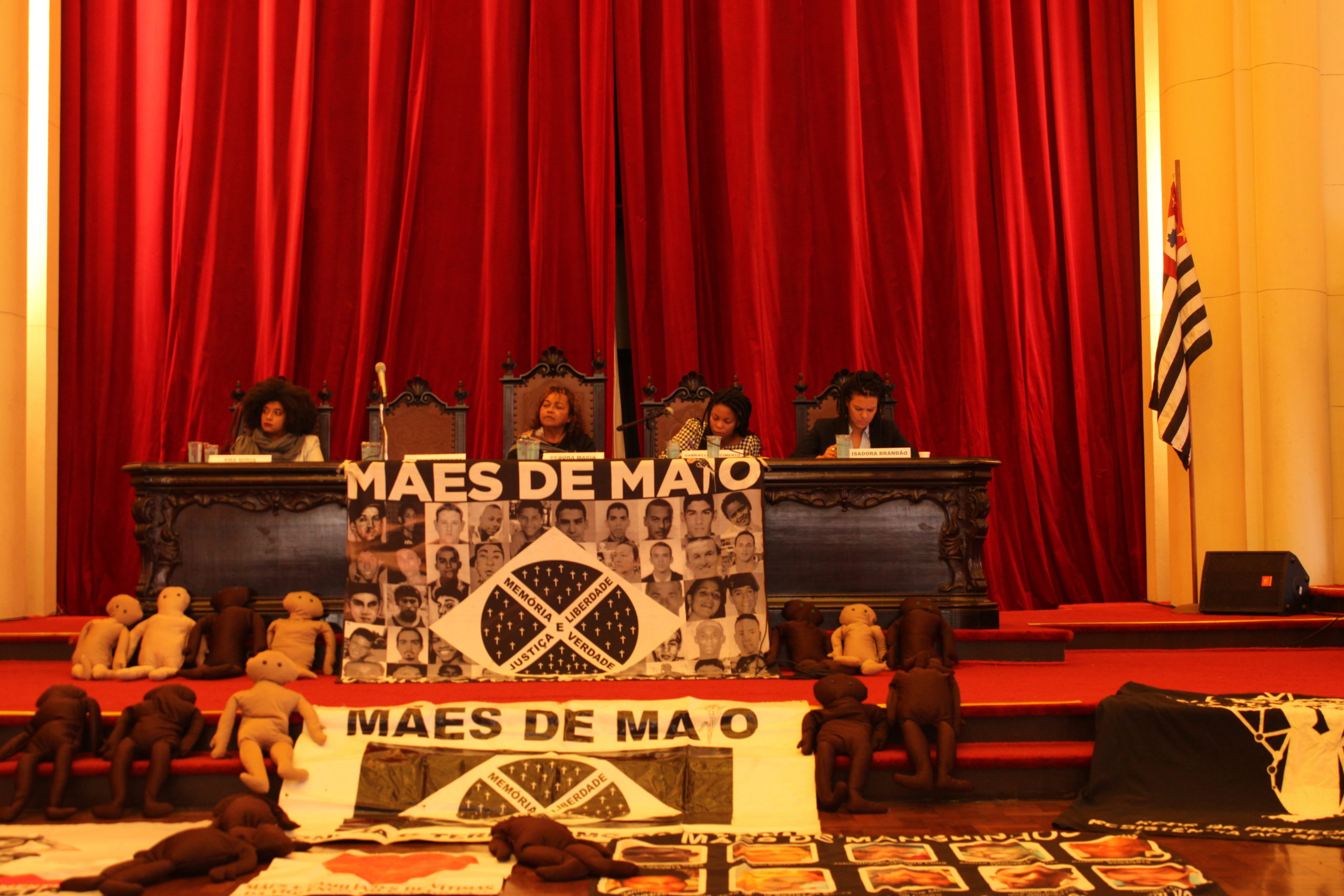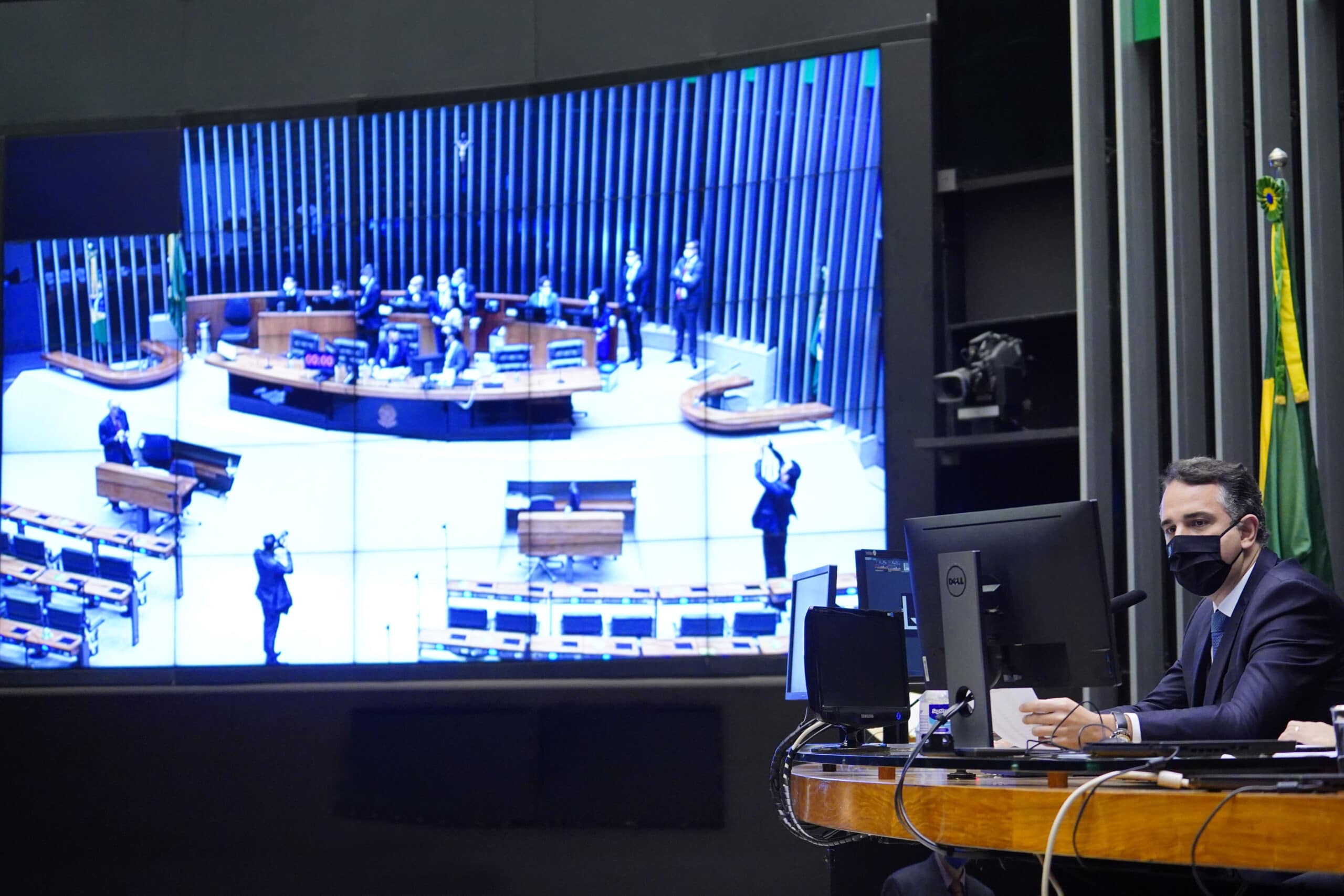Complaints of police violence at custody hearings are ignored, report shows
The study “Labyrinthine Investigations” reveals that reports of violations committed by arresting police officers are shelved
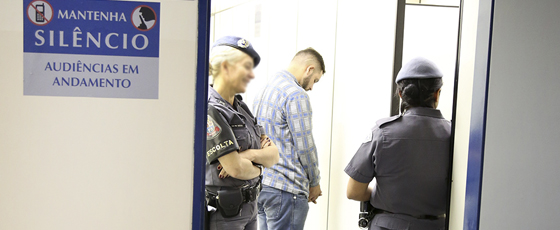
Arrested and charged with drug trafficking, Rafael* arrived at the Barra Funda Courthouse, in the West Side of the city of São Paulo, to have the chance to be heard in a pre-trial custody hearing by a judge, a prosecutor and a public defender. Handcuffed, he was read the formal charges for the crime he had allegedly committed, but he also had a chance to speak: besides pleading innocent, he accused the military police officer who arrested him of assault. While the word of the officer was enough to incriminate him, the word of the alleged victim of assault was worthless.
The account described above is identified as “case no. 13” in the recently published report “Labyrinthine Investigations: the course of inquiries into reports of police violence made at custody hearings”, produced by Conectas in partnership with IDDD (Defense of the Right to a Defense Institute). “We wanted to understand the course and the outcome of reports of police violence. And what we found was a structure, with restrictions and delays, that serves to shield police officers from any investigation,” said Carolina Diniz, an advisor for the program to combat institutional violence at Conectas who was involved in the study.
The qualitative report analyzed 53 complaints of assault made against military police officers at custody hearings held in São Paulo in two distinct periods. First, in 2015; then, between 2017 and 2018, when Law 13,491 transferred cases of police violence reported at custody hearings to the Military Justice system.
In the first period of analysis, from 2015, all the cases were investigated and 52% were shelved after the initial assessment. In the second period of analysis (2017 and 2018), two cases were shelved prematurely and 30 were investigated, but 86% were shelved without opening a Preliminary Investigation or a Military Police Inquiry.
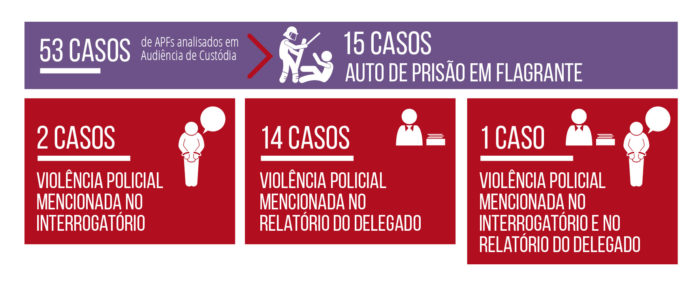
The case presented at the start of this article is emblematic. The complaint against the Military Police observed a complex bureaucratic mechanism that silenced the victim and served only to protect the crimes committed by officers. The investigation against the police officer ended up being shelved at the request of the Public Prosecutor’s Office and the officer received no punishment. The case against the alleged drug dealer followed a very different path, with a technical investigation, interviews of witnesses and even the gathering of video evidence. Eventually, it was discovered that the evidence had been planted by the police officer.
While overwhelming, the numbers do not reveal everything. The main merit of the study lies in dissecting the structure of the divagations that end up perpetuating impunity in the face of complaints of police violence. And the errors start in the early stages of the process, when it is crucial to gather proof and evidence that will support the complaint in the future.
Custody hearings, when detainees are presented before a judge within 24 hours of their arrest, are an important legal mechanism adopted by Brazil in 2015 and provided for in the American Convention on Human Rights and the Brazilian Code of Criminal Procedure since the end of 2019. They were established to determine the legality of the pre-trial detention and to identify signs of torture and mistreatment by officers.
The first opportunity for the victim of violence to report what happened is at the police station, where the accused is taken immediately after being detained so the arrest report can be drawn up. But the environment is not at all favorable. The accused is normally handcuffed, not accompanied by a lawyer, and in the presence of the alleged aggressors. From there, they proceed to the custody hearing, which in an ideal world would be the perfect time to tell the judge about the abuse, in the presence of a public or private attorney and a member of the Public Prosecutor’s Office. In practice, however, the study shows that attorneys are solemnly ignored when they ask the victim to talk about the aggression, while the judge and the prosecutor seem to be working together so the detainee is limited to the role of the accused.
“Brazilian judges are from a white social elite and they have very little empathy towards the people who are the usual occupants of the prison system: poor, young, black men. This lack of empathy, coupled with the authoritarian and punitive legal culture, contaminates these procedures,” said Hugo Leonardo, a criminal lawyer and president of IDDD.
According to Vivian Peres da Silva, projects consultant at IDDD who participated in the institute’s research on custody hearings, one of the points that stood out when they were gathering information for the study was the lack of clarity by judges regarding the protocols for investigating reports of violence. “What I saw here in São Paulo is that the questions that are asked are not clear, objective. ‘Was there any problem with the police?’, or ‘Are there any complaints about the police?’ Some detainees go through the hearing without even realizing that those questions were about police violence,” she said.
The third chance the victim has to be heard is during the physical examination, conducted by a medical expert in the Forensic Medical Institute’s facilities inside the courthouse. All in vain. Just like the judge, the medical examiners, if they do anything at all, make a perfunctory note of the complaints of torture and mistreatment – normally a few lines in a three to five page report. It is another missed opportunity. And probably the last, since after that, in almost all the cases studied, the victims are never again asked about the allegations they have made.
“What struck me the most was the deletion of the reports of torture over the course of the process,” said Nina Capello, a researcher involved in the study. “In theory, the allegations made in the custody hearing should be followed up with an investigation of other evidence, a more careful look at the details of the case and a focus on accompanying the victim of torture. So it surprised me to see that the longer the process lasted, the more the person’s original claims are lost.”
This institutional gag occurs because complaints against military police officers – accused of being the perpetrators or accomplices to the aggression in 72% of the cases – proceed through a complex legal system that looks like it was carefully designed not to work. “The institutions work to justify the conduct of the police officers, to avoid investigation and punishment,” said Adilson Paes de Souza, a retired Military Police Lieutenant Colonel in São Paulo who has a PhD from the Institute of Psychology of the University of São Paulo (USP).
Military Justice
Until 2017, complaints against military police officers were investigated by the Military Justice and the Civilian Justice systems. Following the change in jurisdiction made by Law No. 13,492, complaints against the military have been investigated exclusively by the Military Justice system. As a rule, crimes by military police officers are investigated in a preliminary inquiry, a procedure with no legal basis overseen by an officer from the same battalion, which partly explains the high rate of impunity in the cases studied.
Even when an inquiry is opened by the civil or military police to investigate a complaint, the only people heard in most cases are the accused police officers and the witnesses they choose themselves. According to the report, in their internal investigations, the officers call people who accuse the military police of aggression “complainers”, “accused” and “offenders”. People who are never treated as victims, but as suspects.
According to Souza, police work, which is stressful in nature, coupled with what he calls a “police subculture”, in which aggression is the sign of a good officer, are collective defense mechanisms. “The group feels threatened, shares in the suffering and sets its own rules to deal with this adverse situation. And so, a good cop is a cop who kills,” he said.
The retired lieutenant colonel recognizes that custody hearings are a good opportunity for the safe reporting of cases of police violence, but only in theory. The problem, he says, is structural. “The existing doctrine in the Military Police is one of militarization and war against the enemy, and this also spills over into the Civil Police, the Public Prosecutor’s Office and the Judiciary. When the judge ignores clear signs of torture that a detainee has suffered, the message is the following: this is the enemy, damn it, no standards and guarantees for him,” said Souza.
The report exposes a grim scenario, but it proposes solutions – most require only observance of the law. Among the main suggestions are the presence of a representative from the Public Defender’s Office with the detainee as soon as they are taken to the police station, a breakdown of the questions from the judge on police violence asked at the custody hearing and the creation of exclusive teams at the Public Prosecutor’s Office to deal with this type of crime, given that one of the responsibilities of this Office is external oversight of the police.
And, of course, the Military Police urgently has to stop investigating itself. “How likely is it that someone who was a victim of violence is going to say so inside a battalion to the officers themselves?” asked IDDD’s Hugo Leonardo. “This is a pathetic situation. It’s not too much of a stretch to say it’s a failure.”
* Fictitious name given to the victim
